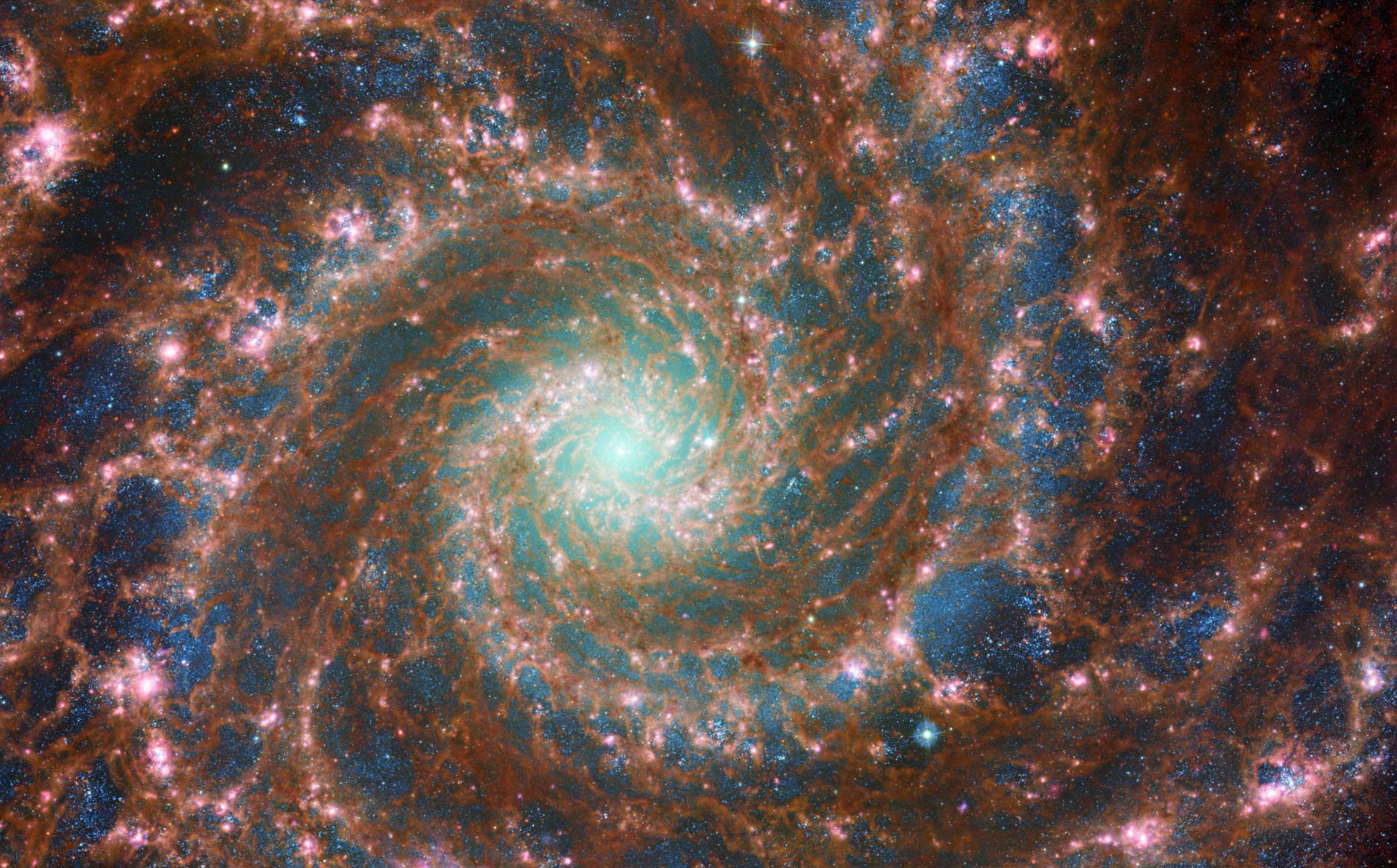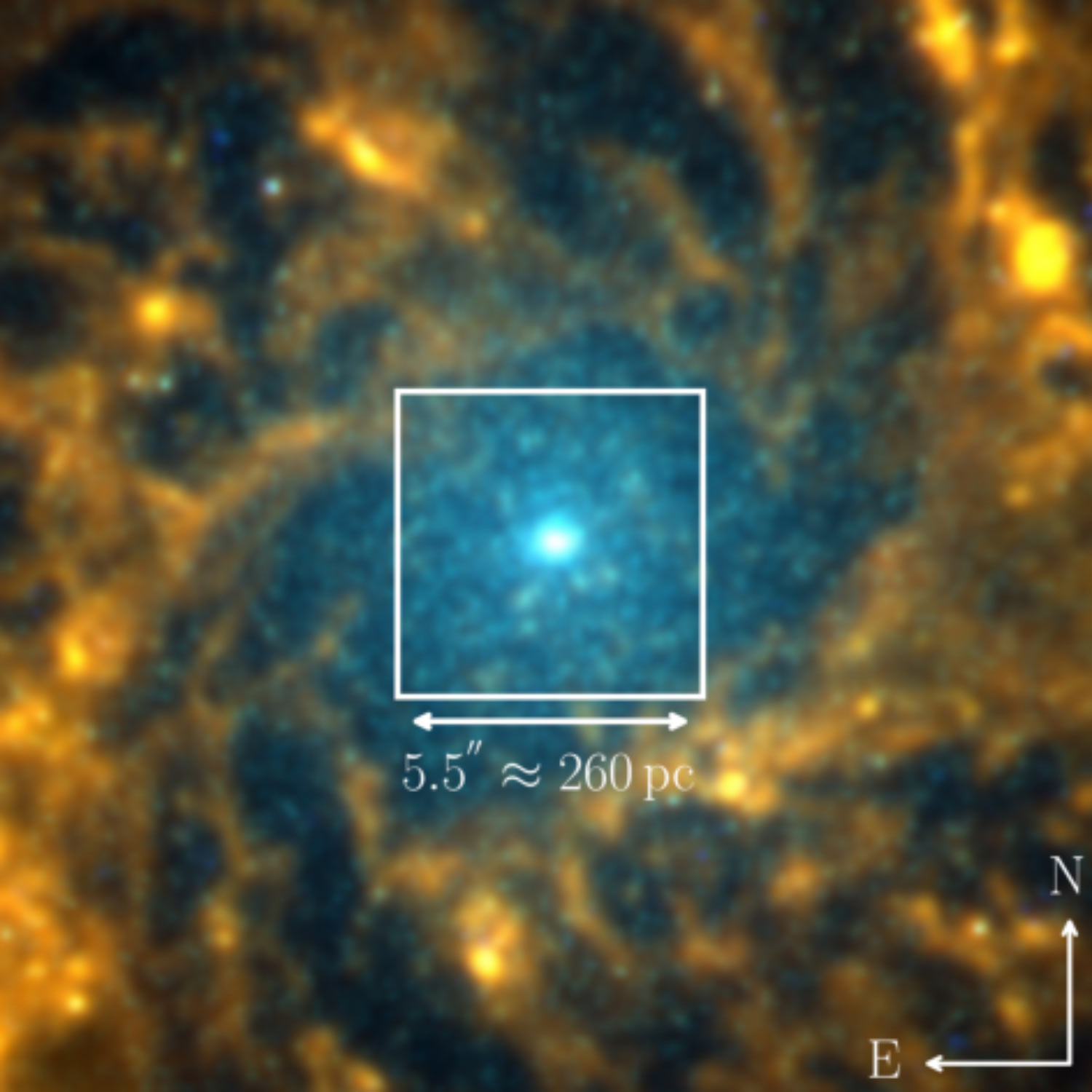A team of astronomers combined archived data from the Hubble Space Telescope and recently obtained James Webb image data to study in detail the structural and photometric properties of the star cluster at the center of the galaxy Messier 74 (M74).

“The star cluster at the center of M74 was analyzed by astronomers earlier using Hubble/WFPC2 image data. But we could not perform an in-depth analysis due to the insufficiently high resolution of the images. With the appearance of James Webb at the beginning of this year, we studied the nucleus in optical and infrared modes, analyzing both its structural and photometric properties,” the scientists explain.
Star clusters in the cores of galaxies are of interest to scientists, because they are relatively close to the center, where the supermassive black hole is located. Their radii range from several to tens of parsecs. Such radii are typical for globular clusters.
The masses of the stars in the center can reach 109 solar masses. Moreover, due to its compactness, the core density can approach 108 solar masses per cubic parsecs, in fact making the central star clusters the densest star systems known.

The authors of the study found that the nuclear star cluster M74 has a diameter of 10 parsecs (33 light-years) and is located in a cavity measuring 200 parsecs by 400 parsecs (652 by 1304 light-years), where there is neither dust nor gas. The cluster contains a stellar population that is 8 billion years old, with no signs of any significant star formation over the past few billion years.
“The reason for the absence of star formation in the central cavity remains unknown. The nature of the radiation in the mid–infrared range, in which James Webb sees, also remains a mystery,” the scientists explain.
M74 Features
Messier 74 is located about 32 million light-years from Earth in the equatorial constellation of Pisces and has a diameter of 95 thousand light-years. The galaxy was discovered by French astronomer Pierre Menschen in September 1780. Messier 74 is also known as Galaxy Phantom, M74, NGC 628, LEDA 5974 and HIPASS J0136+15.
M74 belongs to a special class of spiral galaxies, because its branches protrude and are clearly outlined, unlike the partial and uneven structure that can be seen in other galaxies. The relative proximity and good location (it faces the Earth) and the well-visible clear spiral structure make it an ideal “target” for astronomical observations.
Earlier we reported on how James Webb found the most distant galaxy in the Universe.
According to Sci News
Follow us on Twitter to get the most interesting space news in time
https://twitter.com/ust_magazine
